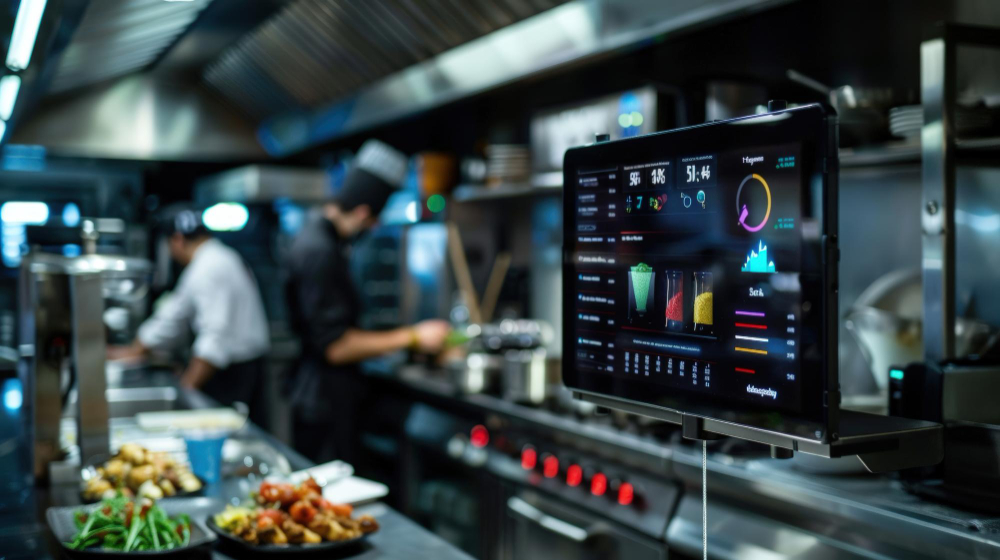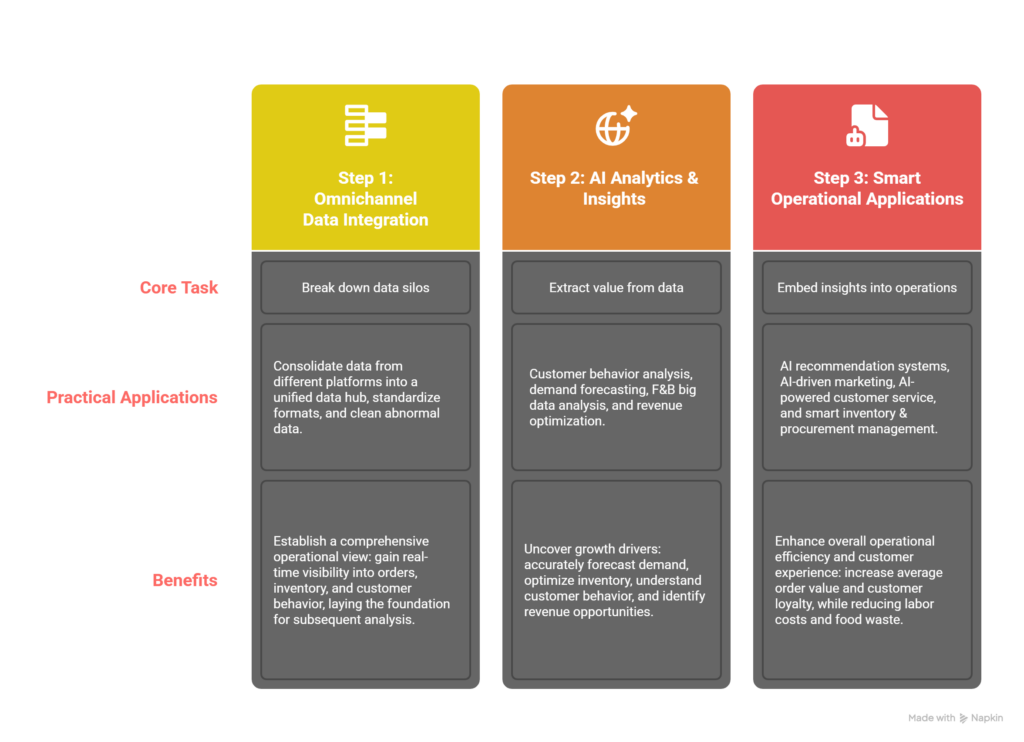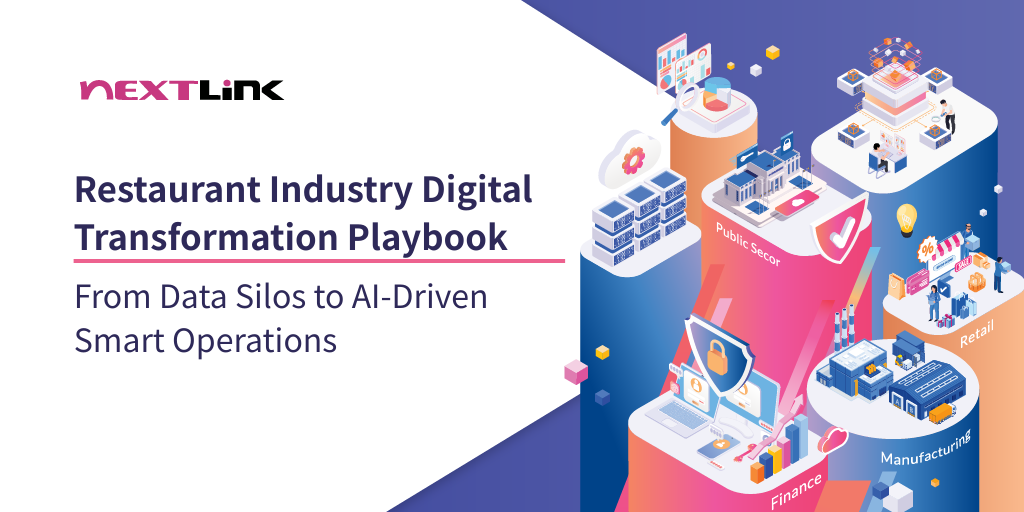The global restaurant industry is undergoing an unprecedented wave of transformation. According to research firm Fortune Business Insights, the global food service market is expected to surpass USD 4.03 trillion by 2025, with the restaurant technology market projected to grow at a compound annual growth rate (CAGR) of over 16% in the next decade. In this trend, competition has expanded from physical storefronts to the digital arena, and the ability to capture and leverage massive data has become the key differentiator for success.
A 2024 survey by U.S. restaurant tech startup Popmenu, covering 362 restaurant operators, revealed that 79% of U.S. restaurants are implementing or considering AI applications, a trend equally strong in global and Taiwanese markets.
However, the key to successful digital transformation in the restaurant industry is no longer simply adopting digital tools, but breaking down “data silos” to effectively integrate, analyze, and apply data. AI and cloud applications play a central role in turning fragmented data into actionable insights, driving the industry toward smart operations.

Table of Contents
Table of Contents
Four Key Challenges in Restaurant Digital Transformation
To achieve true transformation, restaurants must first address the following challenges and turn them into growth opportunities:
1. Fragmented Data, Lack of Full Visibility
Customer data is scattered across POS systems, delivery platforms, and loyalty programs in inconsistent formats, making analysis difficult. A centralized platform can unify this data and lay the foundation for AI-driven analytics.
2. Lack of Real-Time Decision-Making
Relying only on historical reports or human intuition often leads to overstocking or shortages. By introducing AI-powered sales and procurement forecasting models, restaurants can accurately predict ingredient demand.
3. Shallow Customer Insights, Limited Precision Marketing
Without a full understanding of customer preferences and behaviors, marketing campaigns fall short. With complete customer profiling, restaurants can provide personalized recommendations and precise marketing to boost loyalty and repeat purchases
4. Inefficient Operations
Data should not just be a record—it is the engine of growth. Through integration, analysis, and application, scattered information can be converted into insights that directly drive operations. The following three stages outline the path toward smart operations and revenue growth:
Three Stages of Transformation: Turning Data into Revenue
After analyzing the pain points and opportunities, the next step is to establish a practical roadmap for digital operations. By leveraging restaurant big data analytics, operators can transform information into actionable insights and unlock engines for revenue optimization. This can be planned in three stages, leading step-by-step toward intelligent operations.

Step 1: Omnichannel Data Integration – Breaking Down Data Silos
Imagine having all your data aggregated into one central brain. By building a unified cloud-based data platform that consolidates POS, apps, delivery platforms, and online reservations, managers can gain real-time visibility and build a complete operational picture.
Step 2: AI Analytics & Insights – Finding Growth Levers
AI can map each customer’s consumption habits, provide personalized recommendations, and enable precise marketing. AI models also forecast sales volumes, optimize inventory, reduce waste, and identify popular dishes and peak hours—helping restaurants uncover new opportunities.
Step 3: Smart Operational Applications – Turning Data into Revenue
Finally, apply cloud and AI-driven insights directly to operations. Personalized recommendations increase average ticket size, AI-driven campaigns boost loyalty, and AI chatbots handle customer inquiries 24/7, freeing staff to focus on premium on-site service.
By following this digital operations roadmap, businesses can turn fragmented information into decisive power, optimizing restaurant revenue, boosting operational efficiency, and simultaneously upgrading the customer experience.
Nextlink Empowers Restaurants to Achieve AI-Driven Smart Operations
Nextlink Technology offers end-to-end AI cloud solutions—from data integration and model training to real-world application—helping restaurants embrace AI transformation at a lower barrier of entry. Our four core solutions include:
- Data Platform: Consolidating fragmented data into one system for holistic operational visibility.
- Intelligent Forecasting: AI-driven sales and procurement models that optimize inventory, reduce waste, and improve efficiency.
- Customer Analytics: Insights, segmentation, and dashboards that boost precision marketing and loyalty.
- Sentiment Monitoring: Aggregating customer reviews and using generative AI for instant responses to market feedback.
Nextlink has already helped leading restaurant brands successfully implement AI and cloud solutions, driving growth and brand value. For example, Wowprime Group leveraged AWS CloudFront, S3, and ELB to handle a 20x surge in online orders during the pandemic. With AWS ELB and autoscaling, they optimized reservation flows, captured customer data, and protected sensitive information via Amazon WAF.
EZTABLE, another partner, adopted AWS Lambda serverless computing, improving the speed of restaurant information updates by 96%. According to EZTABLE’s CTO, “With AWS API Gateway and ECS, we can integrate other restaurants and banking platforms, enhancing cross-platform experiences. Lambda significantly reduced the time needed to update all restaurant information by 96%.”

AI-Powered Data Applications: Building a Smarter Future with Nextlink
With intensifying competition and challenges such as declining demographics, fragmented data, unpredictable demand, and talent shortages, restaurants face increasing operational risks.
Nextlink’s AI and data-driven solutions empower businesses to accelerate critical decisions, enhance revenue, and reduce risk. If your organization is struggling with data silos or exploring AI adoption to improve efficiency and profitability, we invite you to connect with us. With our one-stop, customized solutions, we can help you integrate data, apply AI, and achieve digital transformation step by step.
